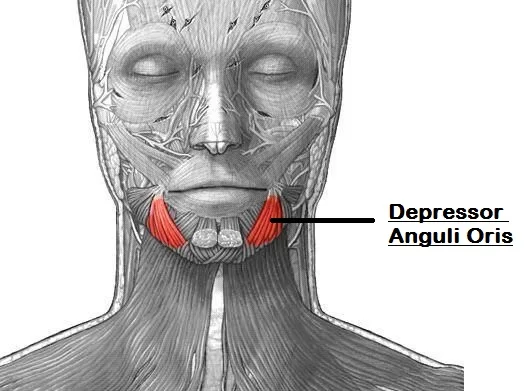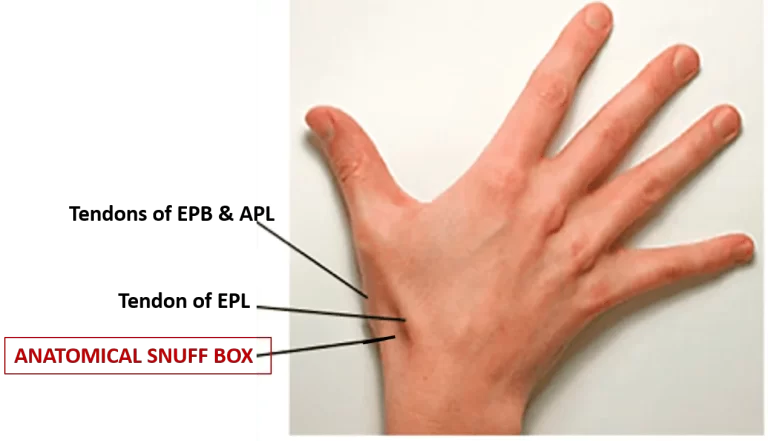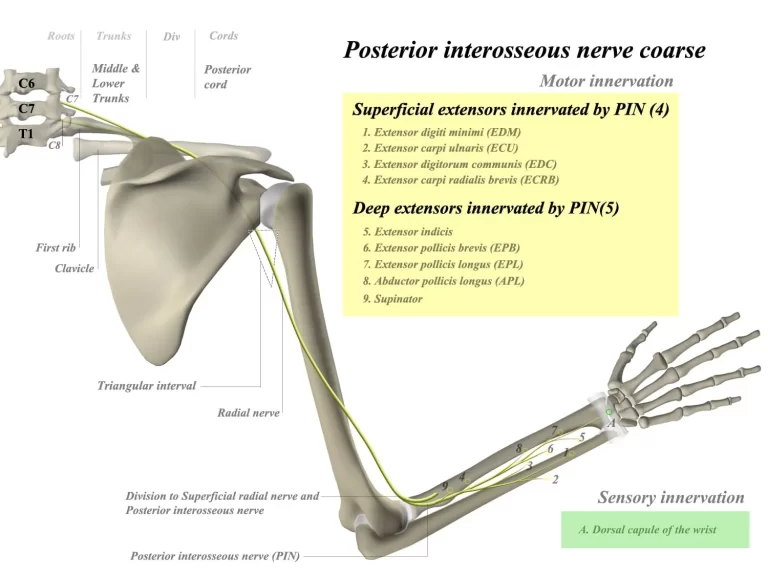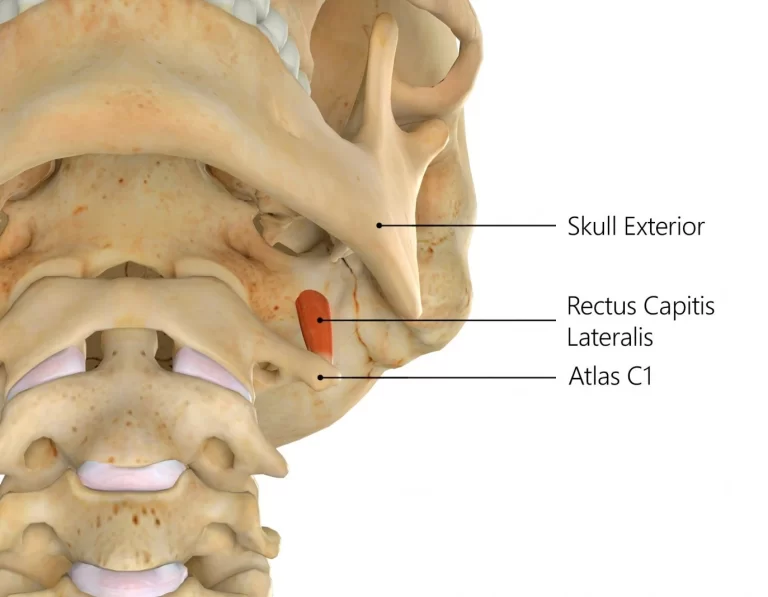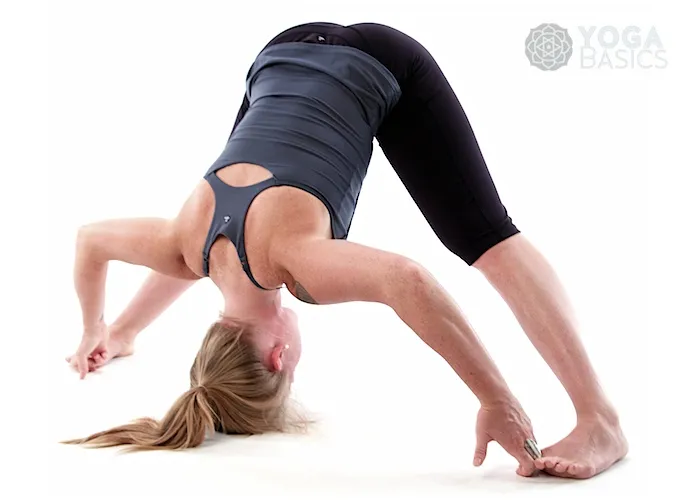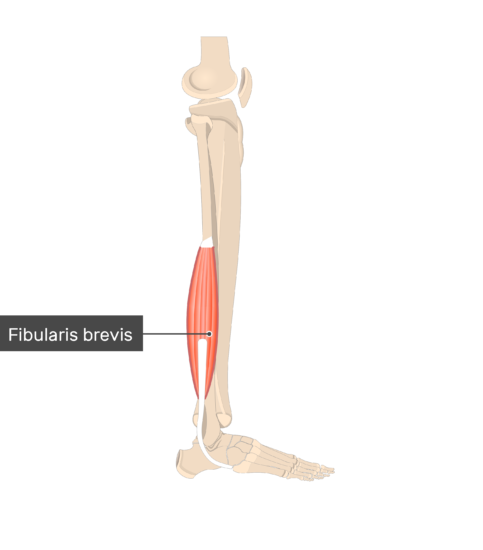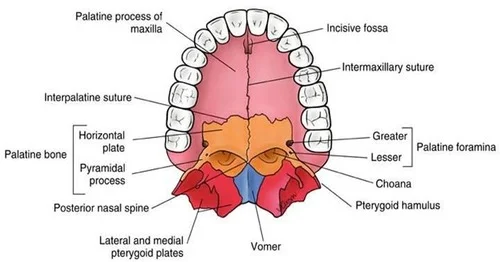Depressor anguli oris muscle
Introduction
Depressor anguli oris muscles is a paired triangular muscle that expands from the mental tubercle of the mandible to the angle of the mouth. It belongs to the buccolabial group of facial muscles also with levator labii superioris alaeque nasi, levator labii superioris, zygomaticus major, zygomaticus minor, levator anguli oris, risorius, depressor labii inferioris muscle, mentalis, orbicularis oris, incisive superior, incisivus inferior and also buccinator muscles.
The muscle is situated lateral to the chin on each side, expanding nearly vertically upwards. Along with other muscles that connect at the angle of the mouth, depressor anguli oris forms a fibromuscular structure called modiolus.
As its name suggests, it depresses (depressor) the angle of the mouth (anguli oris) and drags it slightly laterally. Thereby, it encourages expressing sadness and assists in opening the mouth.
Origin of Depressor anguli oris
The depressor anguli oris muscle originates from the base of the mandible, specifically, from the oblique line that lies in the posterior direction and from the mental tubercle. Both structures are located on the external surface of the mandible. The muscle fibers assemble into a limited fascicle running superiorly towards the angle of the mouth. It then connects with other muscles that insert into the lips.
Depressor anguli oris muscle arises from the anterior side of the mandible as one of the superficial layer muscles of the buccolabial group. The distal part of the muscle courses over the lateral boundary of the depressor labii inferioris. Inferiorly, depressor anguli oris is continued with the platysma muscle and cervical fascia.
Insertion
The depressor anguli oris muscles insert into the skin at the angle of the mouth. On the point where all of these muscles connect and interlace they form a dense, mobile, fibromuscular mass called the modiolus. It is not entirely clear which muscles exactly attach to the modiolus, but individual ones include depressor anguli oris, buccinator, risorius, zygomaticus major, and orbicularis oris muscles.
Some fibers of the depressor anguli oris muscle can persist below its origin point at the mental tubercle and cross the midline to incorporate with the contralateral fibers. These particular fibers assemble the transversus menti muscle, also called the “mental sling”.
Nerve supply
Depressor anguli oris obtains motor innervation from marginal mandibular and buccal branches of the facial nerve (CN VII).
Blood supply
Depressor anguli oris muscle is supplied by the inferior labial and mental arteries, which are branches of the facial artery and maxillary artery, respectively. The venous blood is drained via the facial vein into the internal jugular vein.
Function of Depressor anguli oris
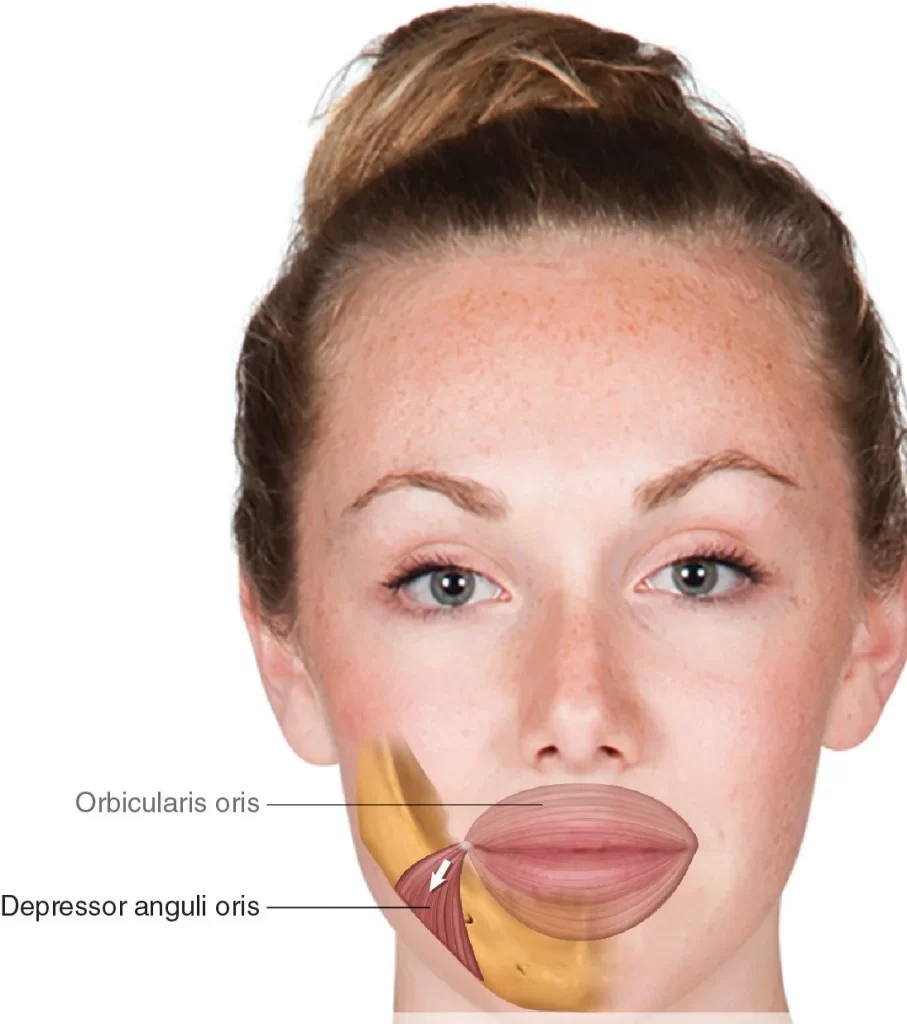
Depressor anguli oris muscle pulls the angle of the mouth inferolateral. Its movement plays an important part in facial expression, as it helps express feelings of sadness or anger. This is why the depressor anguli oris muscle is considered one of the “frowning muscles”, it is along with muscles such as corrugator supercilii, procerus, and orbicularis oris. Depressor anguli oris also helps in functions such as opening the mouth while speaking or eating. While opening the mouth, the movement of depressor anguli oris modifies the mentolabial sulcus, making it deeper and additional horizontal.
People occasionally refer to the depressor anguli oris as the “sadness muscle.” This is because it is accountable for pulling down or “depressing” the corners of the mouth, which occurs when a person frowns. Like other facial muscles, the depressor anguli oris muscle is an essential part of expressing emotion.
Clinical significance
Paralysis
Damage to the marginal mandibular branch of the facial nerve may generate paralysis of the depressor anguli oris muscles. This may contribute to an asymmetrical smile. This may be edited by resecting (cutting and removing) the depressor labii inferioris muscles, which has a more significant impact on smiling.
Hypoplasia/Aplasia
Underdevelopment (Hypoplasia) or complete absence (Aplasia) of the depressor anguli oris muscles can occur. Similarly to paralysis, someone with these circumstances will have an asymmetric smile. These conditions are rare and evolve at or before birth (congenitally).
Interestingly, many people get Botox injections into this muscle to get rid of the permanent frown lines that may start to emerge on the face. Additionally, some babies are born without these muscles on one side of their face, which causes only one side of their mouth to run down when they are unhappy. However, as they reach older, this disease is usually not apparent.
Treatment
Botox, one brand of botulinum toxin, is one option. It can help eliminate the frowning impression by blocking the nerve signals trusted Source that makes the muscles contract. Using Botox on the depressor anguli oris can assist elevate the corners of the mouth and even create a temporary neck lift. However, there is inadequate research on Botox treatment for this muscle, so researchers do not fully know its risks and side effects.
While Botox injections carry fewer risks than surgical procedures, an individual needs repeat injections to maintain results. Additionally, obtaining a Botox injection into the depressor anguli oris is an inpatient process and does not require a hospital stay.
Botox is a neurotoxin. These essences target the nervous system, disrupting the nerve signaling procedures that stimulate muscle contraction. This is how the medication generates temporary muscle paralysis. For any muscles to contract, the nerves release a chemical messenger so-called acetylcholine at the junction where nerve endings encounter muscle cells. Acetylcholine connects to receptors on the muscle cells and induces the cells to contract, and/ or shorten. Botox injections discourage the release of acetylcholine, which prevents the muscle cells from contracting. In this way, the toxin supports the muscles to become less stiff.
Stretching Exercise:
This stretch is great for relaxing the muscle. This stretching helps to contrast the horizontal line that can be enunciated on the chin and the lines going down from the corners of the mouth.
Keep your face in a neutral position and position your fingers under your chin. There are two separate stretches for these muscles.
1) While pushing firmly with your fingers, push them away from each other going straight out, following the angle of the jaw. Jut out your jaw negligibly as your fingers pass over the chin.
2) While pressing firmly with your fingers move them away from each other but this time with a remote upward angle towards the corners of your mouth. Furthermore, jut out the jaw negligibly as the fingers pass over the chin. Move through the stretch and maintain for 5 seconds. Rest and repeat. Start with 5 reps per day and work up to 10 reps per day by increasing the number of reps each week. This is an easy movement that can be done at any time.
FAQ
What does the depressor anguli oris muscle do?
Depressor anguli oris pulls the angle of the mouth inferolateral. Its action plays an important part in facial expression, as it helps express feelings of sadness or anger.
Where is the depressor Anguli?
The depressor anguli oris muscles (triangularis muscle) is a facial muscle. It originates from the mandible and is inserted into the angle of the mouth. It is also associated with frowning, which depresses the corner of the mouth. Scheme showing configuration of fibers of Orbicularis oris muscle (triangularis labeled at bottom right).
Is depressor anguli oris involved in smiling?
The depressor Anguli oris muscle is a muscle that functions in the frowning expression.
Is the depressor anguli oris superficial or deep?
The depressor anguli oris (DAO) is a superficial muscle of facial expression that sketches the angle of the mouth downward and laterally. The origin of the DAO is very deep, along the oblique line of the mandible, and persisted with the platysma.
What nerve innervates the depressor anguli oris?
The depressor anguli oris muscle received innervation from both lower buccal and marginal mandibular facial nerve branches, whereas the depressor labii inferioris muscles were solely innervated by marginal mandibular branches.

